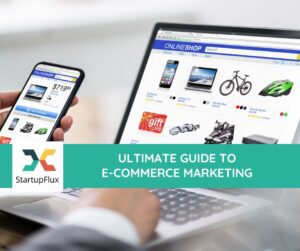Keyword Research: According to digital marketing experts, keyword research is the first and most important step for an eCommerce SEO optimization strategy. Make sure you are picking up the right keywords that work effectively well because the wrong ones will negatively impact and won’t bring enough organic traffic to your website.
The keywords should be product-focused – relevant to your brand – and must not be difficult to rank. They must be associated with all of your pages, such as the home page, landing page, product categories pages, etc. Target transactional keywords and not informational keywords as they won’t bring a high conversion rate.
Long-tail keywords are the best for SEO marketing strategy as it lessens the competition. When it comes to optimizing eCommerce sites, keyword research tools can help dramatically by simplifying the process of finding keyword ideas, their volume, competitions, etc. Some of the tools include Semrush, Amazon suggests, Google keyword planner, Google suggest, etc.
Pick the best keywords from researched ones that will help your website rank. Avoid highly competitive keywords. You should take into consideration the traffic, search volume, and percentages when choosing keywords.
Ecommerce site architecture: Once you are done with keywords research, the next step is to put that information into action. The site architecture involves setting up your navigation and product categories pages. It’s about bringing the most relevant content in front of users and minimizing the number of times they have to click to find it.
Make your website simple and scalable and no page should take more than three clicks to get from one page to another. Furthermore, make use of keyword research for creating highly relevant page URLs and subdirectories.
Your home page should include the links of all your major category pages and some of your best product pages as well. Proper internal linking ensures those pages get the most attention and authority from your home page giving them a better chance of high ranking.
Note: It is important to engage your visitors and make yourself more visible if you want to be seen online. Write blogs and publish them on your site which is informative and can draw your visitor’s attention. Create a subscription database so that each blog that you publish goes to these recipients, thus increasing your site traffic. Content optimization helped our clients increase their traffic by almost 300 percent. Check our healthcare digital marketing and legal digital marketing services for success.
On-page SEO strategy: On-page strategy in SEO marketing means your keywords are in the right places in your content so that Google knows what your page is all about. It is also important because it helps you appear in other Search Engine Results Page (SERP) features. It can be done by optimizing title tags, meta descriptions, images, etc.
Technical SEO: The website should be able to provide the best possible experience to users by taking into account the technical side of it, such as site speed, mobile-friendliness, working links, and user experience. To perform this job, you can take the help of some advanced tools.
Local SEO: If you have a physical store, with the help of the Google My Business tool you can put the details of your business into the database of Google that will allow your business to show up in local search results. You show all information regarding your business, such as website link, address, contact details, etc.
Content marketing: Many eCommerce websites have realized that content marketing works the best as it is the easiest way to rank for more keywords and build more backlinks. You can write blogs that can be related to the type of products you deal with. For example, if you have a jewelry website you can go for a blog with keywords that include, ‘ best diamond jewelry under 20k.’




